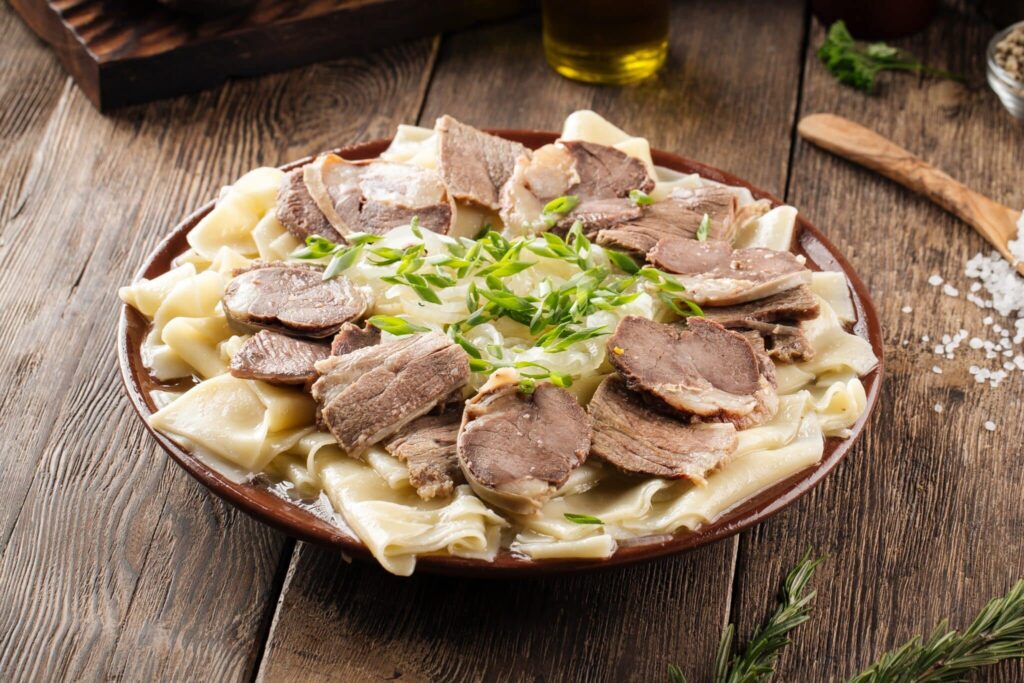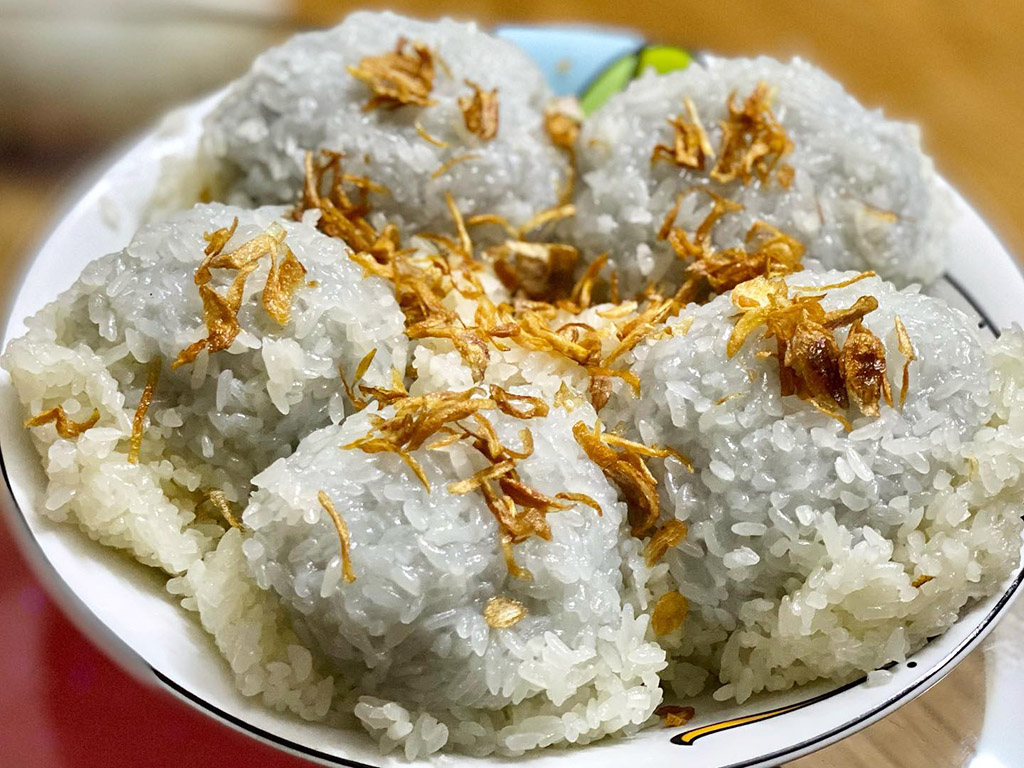Food is one of the most fascinating ways to connect with a country’s culture. While many international dishes have become famous worldwide, there are countless unique and lesser-known culinary treasures waiting to be discovered. For adventurous eaters, trying uncommon international dishes provides a deeper understanding of a region’s traditions, flavors, and history. Here’s a list of 10 lesser-known international dishes that will take your taste buds on an unforgettable journey.
1. Fufu – Ghana

Fufu is a traditional dish from West Africa, particularly Ghana, made from starchy ingredients such as cassava, yams, or plantains. The roots are boiled, pounded, and then formed into a smooth, dough-like ball. Fufu is typically eaten with a flavorful soup or stew, such as light soup or groundnut soup, often made with chicken or fish, and seasoned with spices like ginger, garlic, and chilies.
The texture of fufu is incredibly unique—chewy and slightly sticky, it pairs perfectly with the rich, spicy stews. Eating fufu is often a communal activity, where diners tear off a portion of the fufu and use it to scoop up the soup or stew. The process is as much about the experience of sharing the meal as it is about the food itself. Fufu might not be widely known outside of Africa, but it’s a must-try for anyone seeking to experience the heart of Ghanaian cuisine.
2. Ceviche de Chochos – Ecuador

Ecuador’s ceviche de chochos offers a different take on the popular Latin American ceviche. Instead of using seafood, this dish is made with chochos, also known as lupini beans. The beans are boiled and marinated with a mixture of lime juice, onions, cilantro, and tomatoes, often accompanied by corn, plantains, and sometimes a bit of avocado.
Ceviche de chochos is a refreshing, tangy dish that is especially popular in the highland regions of Ecuador. Its bold flavors and texture make it a satisfying vegetarian alternative to the traditional seafood ceviche. The combination of fresh herbs, citrus, and legumes makes this dish not only unique but also incredibly healthy.
3. Beshbarmak – Kazakhstan

Beshbarmak is considered the national dish of Kazakhstan. The name “beshbarmak” means “five fingers” in Kazakh, referring to the traditional way of eating the dish using your hands. It consists of boiled meat—usually beef, lamb, or horse—served over wide, flat noodles and topped with an onion-based broth. The dish is often served in a large bowl and eaten communally, with diners scooping up the noodles and meat.
The slow-cooked meat is incredibly tender, and the savory broth infuses every bite of noodle. The dish is hearty and filling, perfect for large gatherings or celebrations. Though horse meat is commonly used, beef and lamb are more commonly found in restaurants catering to international tastes. If you find yourself in Kazakhstan or the surrounding Central Asian region, Beshbarmak is a must-try dish that will introduce you to the traditional flavors of the steppes.
4. Hákarl – Iceland

One of the most unique—and challenging—foods in the world is hákarl, a traditional Icelandic dish made from fermented greenland shark. The shark is buried in the ground to ferment for several months before being hung to dry. After this long fermentation process, the meat has a pungent, ammonia-like odor and a chewy texture that can be off-putting to many.
While the dish may sound intimidating, it holds cultural significance and is often served in small cubes, accompanied by shots of Brennivín, Iceland’s signature schnapps. Locals often eat hákarl during special celebrations, and it’s typically part of a traditional Icelandic Þorramatur (a feast of preserved and fermented foods). The taste is extremely strong and earthy, and while it might not be for everyone, trying hákarl is a rite of passage for adventurous eaters.
5. Durian – Thailand/Malaysia/Southeast Asia

Known as the “king of fruits,” durian is infamous for its strong odor, which some describe as a mix of rotten onions, gym socks, and sulfur. Despite its off-putting scent, durian is beloved in Southeast Asia, particularly in Thailand and Malaysia, where it is eaten fresh or used in various desserts. The flesh inside the spiky exterior is rich, creamy, and sweet, with a custard-like texture.
While the smell may be overwhelming to some, durian enthusiasts claim it has a complex flavor that’s a mix of sweet, savory, and even slightly bitter. Durian can be enjoyed in various forms, such as durian ice cream, sticky rice, or even durian pancakes. If you can get past the scent, it’s a deliciously unique experience.
6. Kiviak – Greenland
Kiviak is a traditional Greenlandic dish made from auks (a type of seabird) that are fermented inside the body of a seal. To prepare kiviak, the birds are stuffed inside the seal’s carcass, which is then sealed and buried for several months to ferment. The result is a pungent, gamey dish with a strong, earthy flavor.
Kiviak is typically eaten during the winter months when fresh food is scarce. Though it may sound unusual to outsiders, kiviak is an important part of Greenlandic culture and has been eaten for centuries. The fermented birds are often consumed whole, bones and all, and are accompanied by strong spirits. Like hákarl, kiviak is a dish that challenges your palate but is deeply rooted in the survival techniques of the indigenous Greenlandic people.
7. Sannakji – South Korea

Sannakji is a unique Korean dish featuring live octopus. The octopus is cut into small pieces while still alive and served immediately, often lightly seasoned with sesame oil and seeds. The tentacles are still moving when they hit the plate, providing a fascinating, if slightly disconcerting, dining experience.
The texture of the octopus is chewy, and the taste is fresh and slightly briny. Sannakji is usually eaten with a dip of sesame oil and salt, and sometimes accompanied by rice or vegetables. While the dish is popular in South Korea and some parts of Japan, it’s not for the faint of heart. However, it’s an iconic dish that showcases the adventurous side of Korean cuisine.
8. Lutefisk – Norway/Sweden

Lutefisk is a traditional Scandinavian dish, particularly popular in Norway and Sweden during the Christmas season. It’s made by soaking dried fish (usually cod) in a lye solution, which makes the fish gelatinous and almost translucent. After soaking, the fish is cooked and served with a variety of accompaniments such as potatoes, peas, and a rich white sauce.
Lutefisk has a distinct, somewhat rubbery texture and a strong, salty flavor. While many people enjoy it, it’s considered an acquired taste, and its unique preparation method can be off-putting for some. Lutefisk holds historical significance as a preserved food from centuries ago, and while it may seem odd to some, it’s an important part of the Scandinavian food tradition.
9. Poutine – Canada

Though poutine has grown in popularity worldwide in recent years, it remains a dish that’s often unfamiliar to many outside of Canada. This indulgent dish comes from Quebec and consists of crispy French fries topped with fresh cheese curds and smothered in rich gravy. It’s the ultimate comfort food, with layers of salty, savory flavors.
While the traditional version is the most common, modern variations include different toppings, such as pulled pork, bacon, or mushrooms. Poutine is often eaten as a late-night snack or comfort food during cold Canadian winters. It’s the kind of dish that sticks to your ribs and keeps you coming back for more.
10. Xôi – Vietnam

Xôi is a traditional Vietnamese sticky rice dish, typically eaten for breakfast or as a snack. The dish consists of glutinous rice mixed with a variety of toppings such as mung beans, fried shallots, peanuts, or crispy pork. Some versions of xôi are sweet, while others are savory, and it’s often served with boiled eggs or even grilled meats.
Xôi is versatile, inexpensive, and comforting, making it a favorite of both locals and travelers in Vietnam. It’s commonly eaten on the streets of Hanoi and Saigon, where vendors serve it from small carts or stalls. Whether you choose a sweet or savory version, xôi provides a delicious and filling introduction to Vietnamese street food culture.
Conclusion
Exploring uncommon international dishes offers a rich, flavorful adventure that goes beyond the familiar tastes of pizza or sushi. From the potent flavors of hákarl in Iceland to the comfort of poutine in Canada, these dishes represent the diversity and history of cultures across the globe. For the intrepid food lover, stepping outside your culinary comfort zone to try new and exotic flavors is one of the most rewarding aspects of traveling the world. Whether you’re savoring fermented shark or digging into a bowl of xôi, these 10 dishes promise an unforgettable gastronomic experience!
